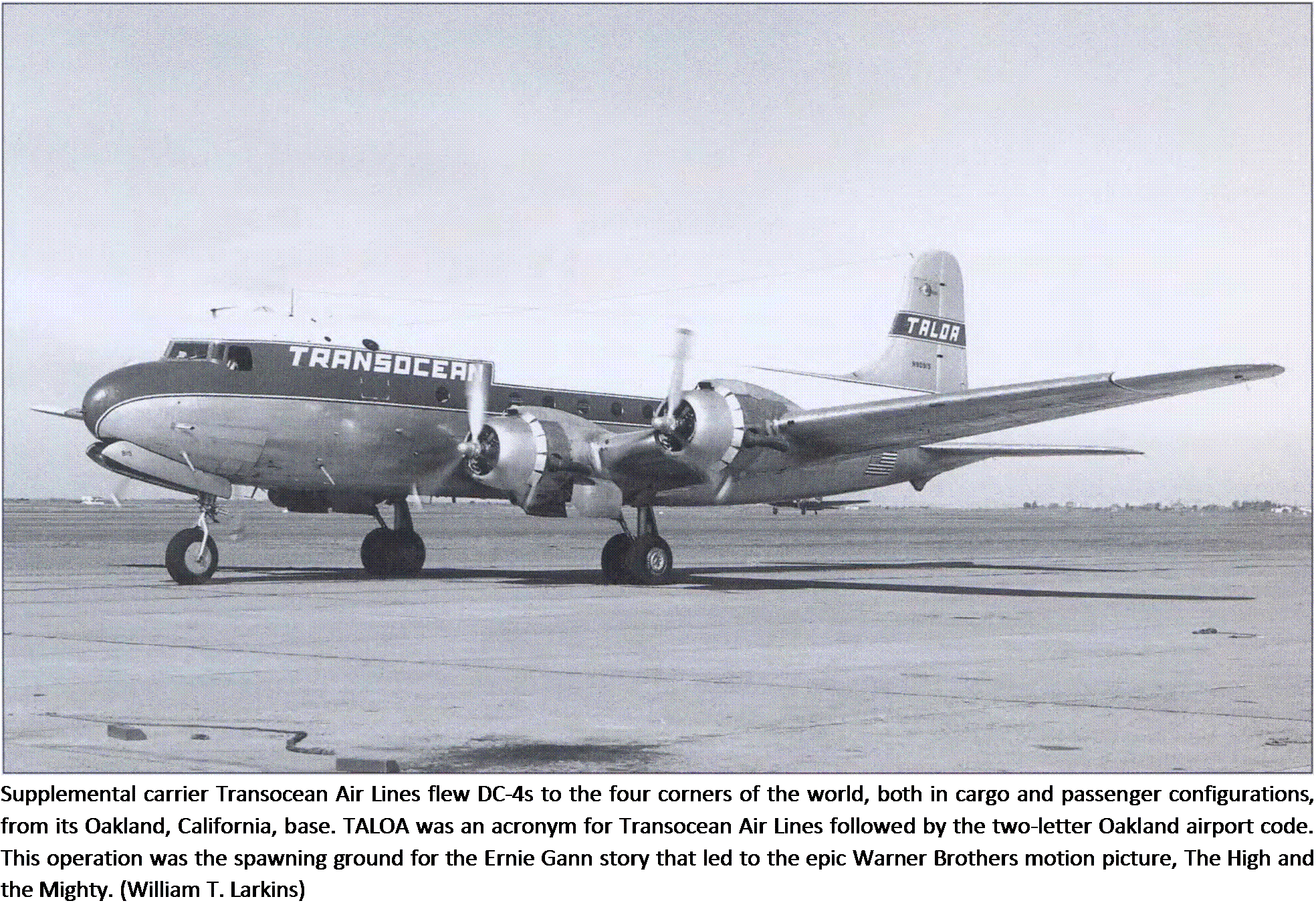State of the Industry in 1954
By 1954, air travel had permeated the awareness of the general public. No longer only for the rich, traveling aboard a modern airliner was now a concept embraced by more and more of the U. S. and international populace. America’s favorite pilot, Arthur Godfrey, loved to talk about the safety and reliability of modern airliners on his TV shows, and it seemed as if every ad for a new car featured a giant silver Constellation flying gracefully overhead. When compared to today’s statistics, however, the percentage of people in the United States who had actually experienced flying aboard a commercial airliner in 1954 seems staggeringly low—only three percent, with the noticeable majority of these travelers being businessmen.
Be that as it may, people could now board a DC-7 or Super Constellation and travel across the United States in pressurized comfort at speeds of 300 mph and altitudes in excess of 20,000 feet. For regional or local service, the new and improved Convair 340 would probably be the aircraft of choice. Airlines even structured their routing to combine the best of both worlds; you could fly coast-to-coast in the DC-7 and then connect to your final destination in the Convair. Businessmen flying on regional airlines could now leave
on their sales calls or attend that big meeting across the state in the morning, and be home easily in time for dinner that evening.
Vacation travel abroad, although becoming more prevalent by air, was still considered something done more suitably by steamship than by airplane. This was understandable considering the number of elegant new ships taking to the oceans in 1954. The magnificent S. S. United States was breaking transatlantic speed records nearly every time she sailed, while the smaller S. S. Independence and Constitution were equally majestic. Cunard’s glorious Art Deco twins, the HMS Queen Mary and Queen Elizabeth handily proved the adage “Getting there is half the fun!” The brand-new (and ill- fated) Italian Andrea Doria and her sister ship Cristoforo Colombo looked like floating art museums on the inside. Passengers didn’t mind spending the better part of a week getting to Europe from the East Coast (or to Ffawaii and Asia from the West Coast) by ship because of the sumptuous level of service.

When the modern propeller-driven airliner is entered into the equation of vacation travel in 1954, we see the factors of pure speed versus luxurious service being prevalent. European cities were 10 or 12 hours away from New York by airplane rather than five or six days by ship; getting there quickly was the clear priority.
Still, this time period represented the heyday of modern ocean liners, and nothing from commercial aviation could stop it. What would be required to greatly impact oceanic travel was a radical new powerplant that could propel commercial airliners to almost the speed of sound, much like Great Britain had attempted with its pioneering Comet, but with much greater range and larger passenger capacity. Although military aircraft were reaping the benefits of this new powerplant, the reality of 600-mph airliners was still many years away.
The radical new powerplant necessary to take commercial aviation to the next level and eradicate the competition for long-range travel from ocean liners was called, quite simply, the modern turbojet engine.










